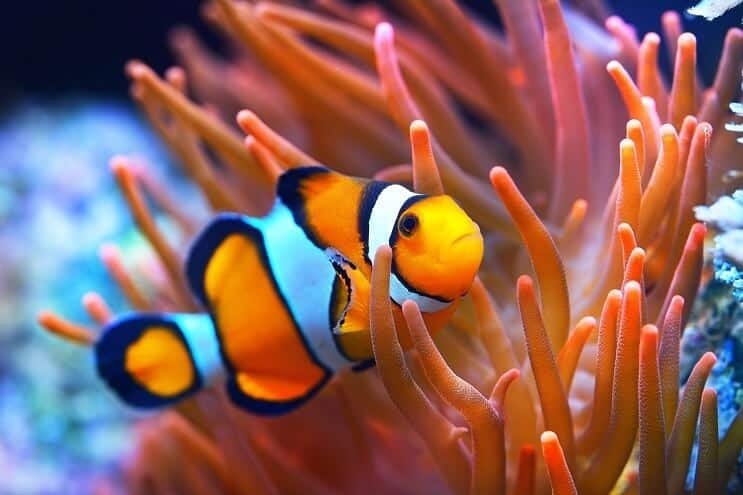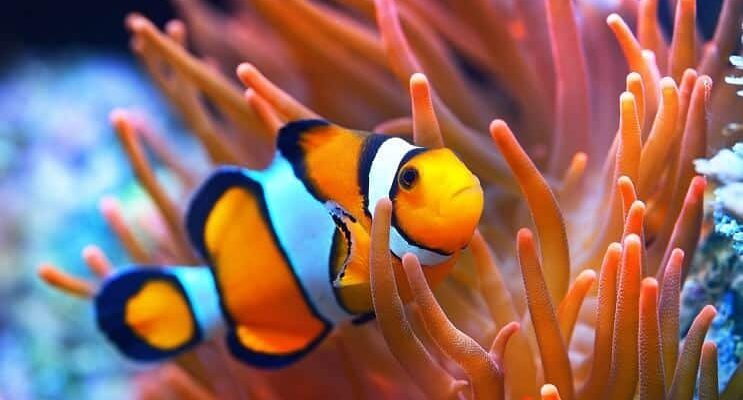
So, let’s dive into the world of clownfish and explore the challenges they face. Understanding their situation helps us appreciate the importance of conservation efforts and how we can contribute to protecting these fascinating fish. Buckle up, because this journey is all about the joys and struggles of our finned friends!
What Are Clownfish and Where Do They Live?
Clownfish, also known as anemonefish, are tropical fish belonging to the family Pomacentridae. They’re best known for their unique relationships with sea anemones. These fish have a natural protective coating that helps them swim among the anemone’s stinging tentacles without harm. Think of it like having a cozy, safe home where they can hide from predators.
You’ll find clownfish primarily in the warm waters of the Pacific and Indian Oceans. They thrive in coral reefs, which are biodiversity hotspots. Unfortunately, these delicate ecosystems are under threat, making the clownfish’s habitat increasingly vulnerable. Their homes are not just vital for their survival; they also provide a habitat for many other marine species that depend on coral reefs.
Are Clownfish Endangered? The Current Status
So, are clownfish endangered? The short answer is, not yet, but they are facing significant threats that could lead to potential endangerment. The IUCN Red List categorizes most clownfish species as “Least Concern,” which means they aren’t currently in immediate danger of extinction. However, that doesn’t mean we should relax.
Many factors contribute to the risk faced by clownfish. Habitat loss due to climate change, pollution, and overfishing are all serious issues. Let’s break it down a bit more.
Habitat Loss and Climate Change
Coral reefs, where clownfish thrive, are being damaged by rising ocean temperatures and acidification—thanks to global warming. When corals stress, they expel the algae living in their tissues, leading to coral bleaching. Without healthy coral reefs, clownfish lose their homes and protections.
Additionally, ocean acidification weakens corals, making it harder for them to build their skeletons. This impacts not just clownfish but countless marine species. Without action, we could see declining clownfish populations and dwindling coral ecosystems.
Pollution’s Impact
Pollution from plastics, chemicals, and runoff can severely affect clownfish and their habitats. Toxins can accumulate in the water, harming not only clownfish but also the anemones they depend on. If clownfish can’t find healthy homes, their populations will struggle to survive.
It’s crucial to understand that every piece of litter and every chemical dumped into our oceans impacts the delicate balance of marine life. Our actions can have bigger consequences than we often realize.
Conservation Efforts for Clownfish
Fortunately, many organizations and communities are stepping up to protect clownfish and their habitats. Conservation efforts range from habitat restoration to public education campaigns to raise awareness about marine life.
One of the most effective methods is restoring damaged coral reefs. This involves planting new coral and creating protected marine areas to give ecosystems time to recover. These sanctuaries help clownfish thrive, allowing them to bounce back from population declines.
Education and Community Involvement
Education plays a vital role in conservation. Many organizations work tirelessly to educate the public about the importance of preserving marine ecosystems. Programs, workshops, and community projects can help inspire people to take action, whether through beach cleanups or advocating for eco-friendly practices.
You might be surprised by how much even small actions can add up! If more people understand how their choices affect clownfish and their environment, we can create a ripple effect of positive change.
How You Can Help Clownfish and the Environment
You might be thinking, “What can I do to help?” It’s great that you’re asking that question! There are several simple, effective actions anyone can take to support clownfish and their habitats.
- Reduce Plastic Use: Try to limit single-use plastics, and always dispose of waste properly to keep our oceans clean.
- Support Sustainable Seafood: Choose seafood that comes from sustainable practices, helping protect fish populations, including clownfish.
- Participate in Local Clean-ups: Join or organize beach clean-up events to remove debris that threatens marine life.
- Advocate for Change: Get involved in conservation organizations or campaigns that promote ocean health and biodiversity.
Each small change you make can contribute to a much larger effort to protect clownfish and their underwater homes.
The Future for Clownfish
The future of clownfish hangs in the balance. While they aren’t labeled as endangered yet, the threats they face are urgent. Climate change, pollution, and habitat loss are pressing issues that need our attention.
By staying informed and taking action, we can help ensure that clownfish continue to swim happily among their beautiful coral homes. The more we educate ourselves and others about their situation, the better chance they have for a bright future.
Final Thoughts
Clownfish are more than just colorful fish; they play an essential role in their ecosystems. As they face various threats, it’s up to all of us to engage in their conservation. With the right actions and a collective effort, we can contribute to preserving these fascinating creatures and the magical underwater world they inhabit.
So, let’s keep working together to protect our oceans and the amazing life within them. After all, every action counts, and we can make a difference—one clownfish at a time!

